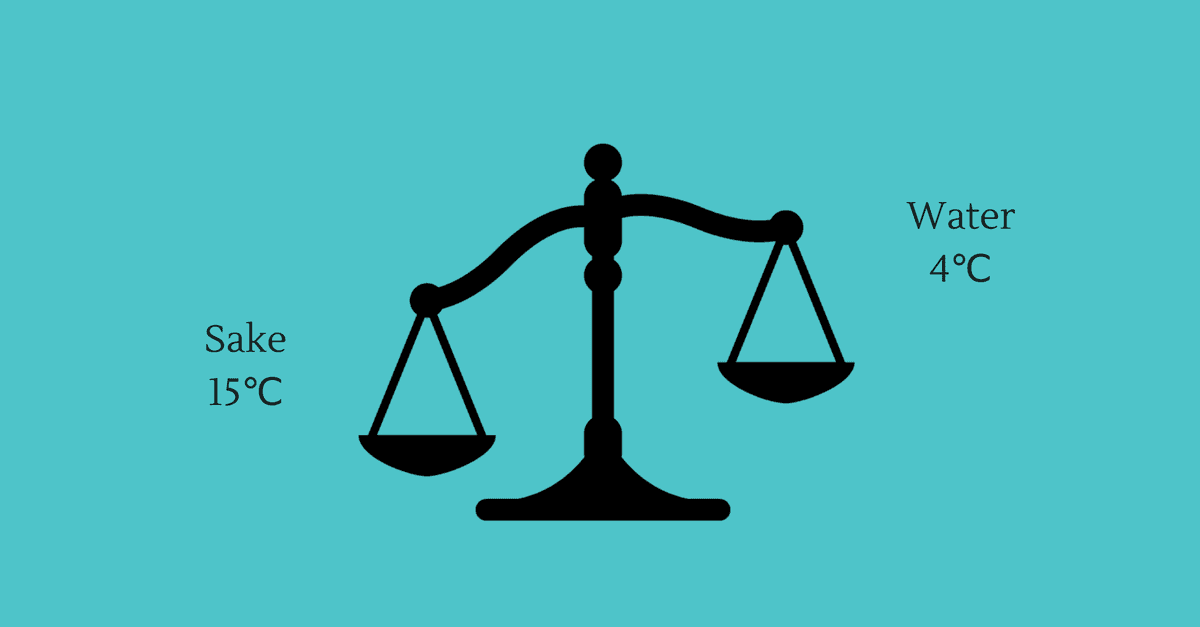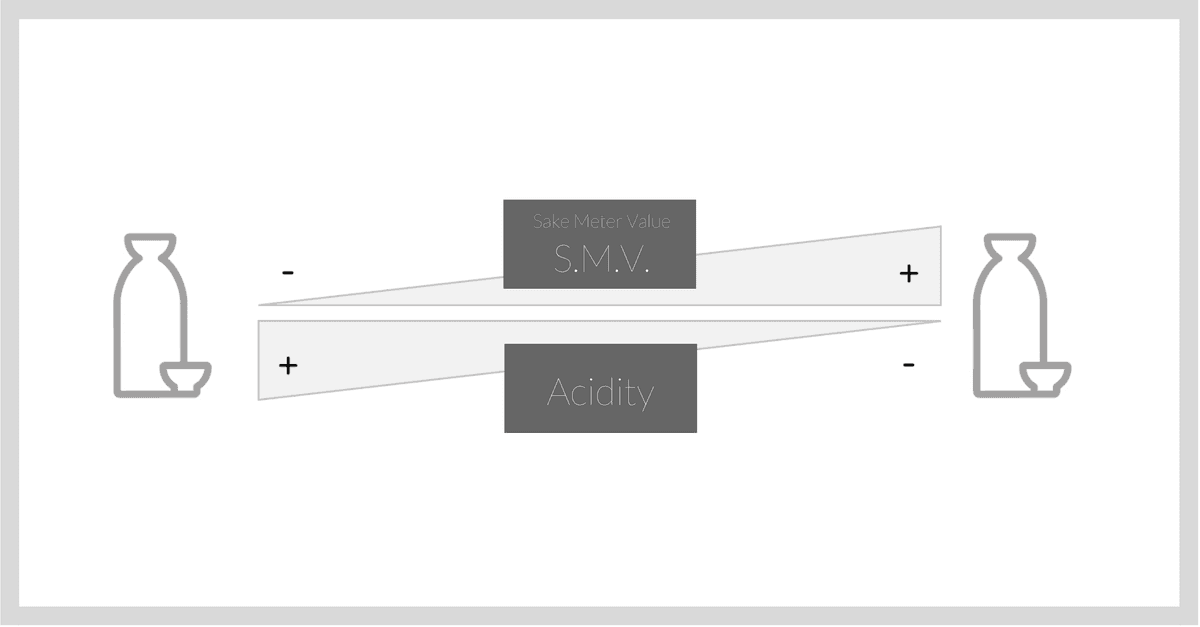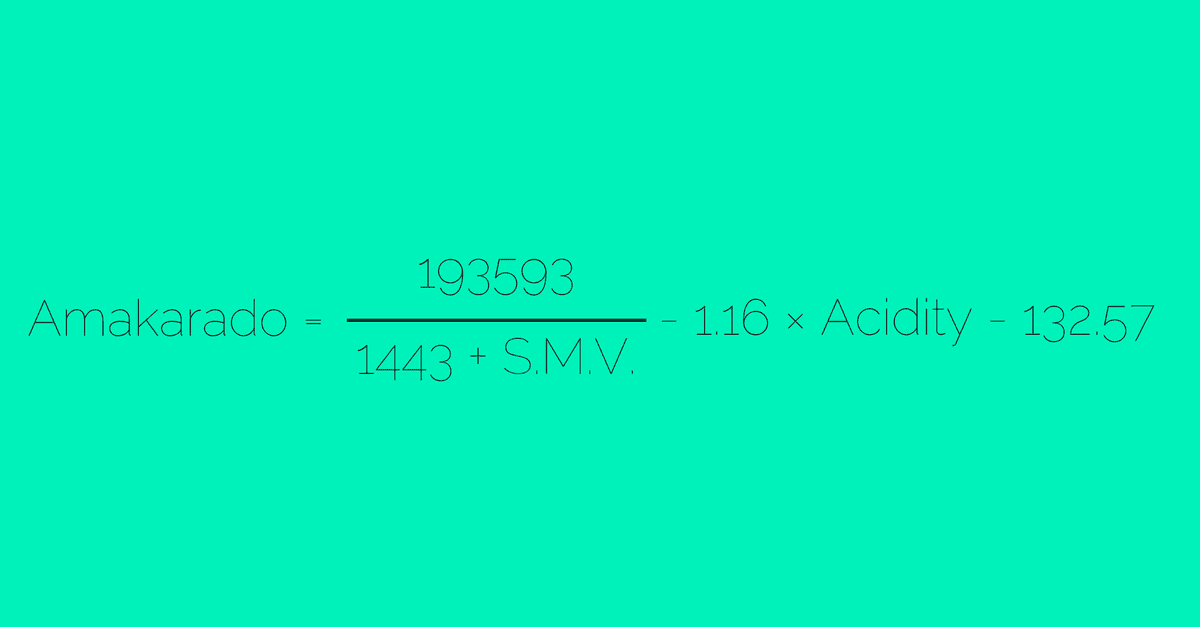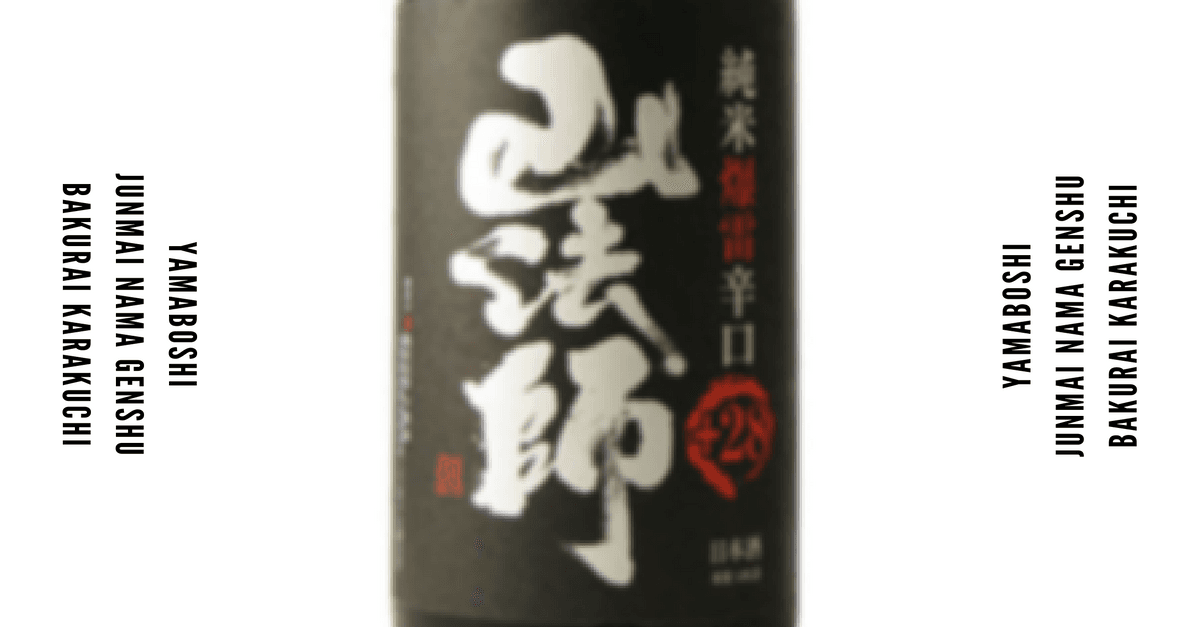If you are reading this page, you probably are the guy who heard the word “Sake Meter Value (S.M.V.)”, then felt “What is it?” Or you know about “Sake Meter Value”, but you cannot remember what it was specifically.
S.M.V is often used as an indicator of dryness of Japanese Sake. However, in fact, it can not simply be explained. The taste of Japanese Sake is determined by various factors besides S.M.V., such as acidity and Sweet to Dry degree.
On this page, I first explain the meaning of S.M.V., acidity, and Sweet to Dry degree. After that, I will explain about the taste preference of the Japanese who is said to like a dry Sake, and finally, introduce sake with the highest S.M.V. in Japan.
What is S.M.V. and acidity?
First, I will explain the S.M.V. and the acidity. Both of them are very difficult to understand.
Sake Meter Value (S.M.V.)
For those studying S.M.V. for the first time, it is very difficult to understand. Um,,, It’s not difficult, but confusing.
In order to make the explanation a bit easier, I would like to explain with the Q&A Style.
Question 1. What does it mean that “This Sake’s S.M.V. is high”?
The high S.M.V. means that the Sake’s weight at the specified temperature is lighter than the water at the specified temperature.

The specified temperature of water is 4°C (39.2°F). It’s because the water will be heaviest in the 4°C conditions. On the other hand, the specified temperature of Japanese Sake is 15°C (59°F). I don’t know why the Sake’s specified temperature was decided so, and I couldn’t find a reliable resource mentioning it.
As a possibility, I saw some say since the average room temperature in Japan is around 15°C, Sake’s specified temperature was set at 15°C.
Let’s go back to the story. High S.M.V. means that Sake is materially light. Conversely, S.M.V. low sake is materially heavy.
Question 2. Why does Japanese Sake change weight?
Because Sake contains different amounts of sugar, Sake’s weight is different.
Japanese Sake is a liquid that has gone through this process.
- Steam Rice
- Koji east changes the rice’s starch into sugar
- Kobo east changes the sugar into alcohol
- Squeeze the liquid from the fermented rice
For details of the process of Japanese sake making, please see “12 traditional steps to make sake”.
And, the 2nd and 3rd step in this process, depending on how much starch in rice is converted into alcohol, the weight of sake will change and S.M.V. will change.
Why? It is because sugar is heavy and alcohol is light. Sake liquor with a lot of sugar remains heavier and S.M.V. leans to minus. Sake with a lot of alcohol content gets lighter and S.M.V. leans toward positive direction.

Question 3. So, if S.M.V. is high, the sugar content will be low and it will get more dry, right?
Basically, Japanese Sake with high S.M.V. contains the small amount of sugar and is expressed as dry. Generally, Japanese Sake with plus 3 to 5 degrees of S.M.V. is often referred to as “dry”, on the contrary, it seems that Sake is explained “sweet” at minus 3 degrees to 5 degrees of S.M.V..
However, “added alcohol” and “added water” complicate this story. Both are used to manage the taste and alcohol percentage of Sake in a manufacturing process.

There might be people who thought “Well, do you put alcohol in Sake? Water as well?” Actually, for many sake, it is normal. And more than 70% of Japanese sake currently sold in Japan is made this way. Sake which has not been added any alcohol is called “Junmai Sake”. Sake which has not been added water is said to be “Genshu Sake”.
This story was explained in detail on the page “Premium (Junmai, Ginjo, Daiginjo) sake perfect guide”. If you would like to know more, please visit the page.
A Sake with a higher alcohol percentage is lighter (It’s higher degrees of S.M.V.). On the other hand, water added Sake has lower alcohol percentage and makes the weight of Japanese sake heavier (It’s lower degrees of S.M.V.). And in both cases the amount of sugar does not change.
Because sake degree is measured after the whole balance is adjusted in this way, there is a situation that the value of S.M.V. and the taste of Sake do not link with each other.
It gets confusing. However, there are other data that are said to affect the taste of Sake. It is the acidity.
Acidity
Acidity is an indicator of the amount of acid contained in the Sake.
Japanese Sake contains acids such as lactic acid, malic acid and succinic acid, and these acids greatly affect the taste of sake. Basically, Sake with a high acidity gives a stronger stimulation to the tongue, so we feel dry easily. On the other hand, we feel kind of sweet when we drink less acid Sake.
However, to make sake dry is not the only effect of acid, but acid, depending on its kind, affects Sake’s Umami. Therefore, it is difficult to simply understand the sweetness and dryness of alcohol just by acidity. This is similar to S.M.V.
Using S.M.V. and Acidity, calculate “Amakarado (Sweet to Dry degree)”
Using S.M.V. and Acidity described so far, there is a formula to calculate how much that sake is Dry. That’s called “Amakarado”.
In 1974, Nippon Jōzō Gakkai, a public interest incorporated foundation, proposed “Amakarado”. This is calculated by combining the numerical values of both S.M.V. and acidity by the following formula. Using this formula we can guess the sweetness and dryness of Japanese sake.

The higher Amakarado means sweeter. However, this data is not necessarily written in sake bottle, so you have to calculate yourself.
After all, what kind of Sake is sweet and dry?
In conclusion, in order to understand the sweetness and dryness of Sake, first of all, understanding S.M.V., Acidity, and Amakarado, but then you have to actually drink and check it.
By the way, basically, “sweet” for explaining Sake is different from “sweet” for explaining fruits. The sweetness of Sake means that it is mellow and has Umami.
However, human feeling is ambiguous, and it is not always the same as “dry” someone feels and “dry” that you feel. So I think that it is good to know various indicators of alcohol as a rough guide and then just to enjoy sake.
When I did research before, I came across the opinion that Junmai style of sake such as Junmai Dai Ginjo, Junmai Ginjo, Tokubetsu Junmai, and Junmai feels sweet. Also, some people expressed that “Dry sake is a sake that is not sweet”. There are many ways to explain. It is very interesting!
An ultra high S.M.V. Sake
For those who have understood so far, S.M.V. and acidity may not be appropriate, but I will introduce Sake that has the highest S.M.V. as far as I know. Because it is kind of interesting, isn’t it?

According to SAKETIMES, sake with the highest S.M.V. is a liquor called “Yamaboshi Junmai Nama Genshu Bakurai Karakuchi” (山法師 純米生原酒 爆雷辛口) and that S.M.V. is plus 28 degrees!
Please remember. I wrote earlier that S.M.V. with Plus 3 to 5 degree Sake is said to be “dry”. This Sake is Ultra Dry Sake which has exceeded that standard by 6 to 9 times. Scared!
I like sweet sake, so I will not drink this Sake, but if there are people who love dry one, please try it!
References:
日本酒度と酸度を理解したら、お酒が楽しくなってきた! | うまさけ
